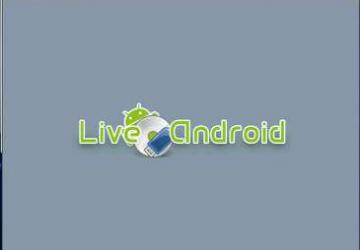Android or WebOS? Try before you buy!
on October 12, 2009

With Google and Verizon recently announcing that several Android phones
will be coming out on their network, a Linux lover might have
smartphones on the brain. Obviously, having Linux running on your
phone is awesome, but which Linux OS should you choose?
Android? WebOS? Maybe even Maemo (Nokia N900) or roll your own on a Neo Freerunner?
This article will help you run two of these (Android and WebOS) as virtual appliances using VirtualBox. In the first part of the article I'll cover Android, in part two (now available), I'll cover WebOS.

In this article, I will be using: Ubuntu 9.04 and VirtualBox (the most recent version is 3.0.8- download it here)
This tip is pretty distro- and OS- independent, though. You could run this appliance on any other distro, or even Windows, if that's the way you butter your bread.

This article piggybacks on the "Put Android Anywhere" article that was featured in the October 2009 issue of Linux Journal, as it mentions running Android in VirtualBox using the "Porting Android to x86" project (https://www.android-x86.org/). I will perform the same task using the Live Android Google Code project. (https://code.google.com/p/live-android/).
Go to the Live Android Google Code Project and download the latest liveCD (0.3 as of this writing. Torrent available here.)
Make a new virtual machine in VirtualBox. Call it "Android" or some other witty name if you are motivated to do so.
Choose the Base Memory Size. VirtualBox defaults to 256MB. Since the HTC Dream (AKA the T-Mobile G1) has only 192 MB Megs of RAM, I figured that this is probably enough.
VirtualBox asks you to select a virtual hard disk. Since we are running Android from a live CD, we don't need one. Uncheck the box to choose a virtual disk, and check "Continue" when the warning box comes up.

Finish creating your virtual appliance, then select "Android" (or whatever your machine name is) from the main VirtualBox window, and click the "Settings" button.
Go to the CD/DVD-ROM section and check "Mount CD/DVD Drive", then select "ISO Image File". Click the folder icon to the right and select the "liveandroidv0.3.iso" file that you just downloaded. Press 'OK".

Click "Start" to start your Android virtual appliance.



Since VirtualBox automatically configures a working Internet connection, feel free to stop by the Linux Journal Website using your shiny new Android Virtual Appliance!

Since it is a live CD, you don't get the resolution of a normal Android phone device, but at least you can kick the tires of the OS. In Part Two we'll look at WebOS.
This article will help you run two of these (Android and WebOS) as virtual appliances using VirtualBox. In the first part of the article I'll cover Android, in part two (now available), I'll cover WebOS.
In this article, I will be using: Ubuntu 9.04 and VirtualBox (the most recent version is 3.0.8- download it here)
This tip is pretty distro- and OS- independent, though. You could run this appliance on any other distro, or even Windows, if that's the way you butter your bread.
This article piggybacks on the "Put Android Anywhere" article that was featured in the October 2009 issue of Linux Journal, as it mentions running Android in VirtualBox using the "Porting Android to x86" project (https://www.android-x86.org/). I will perform the same task using the Live Android Google Code project. (https://code.google.com/p/live-android/).
Go to the Live Android Google Code Project and download the latest liveCD (0.3 as of this writing. Torrent available here.)
Make a new virtual machine in VirtualBox. Call it "Android" or some other witty name if you are motivated to do so.
Choose the Base Memory Size. VirtualBox defaults to 256MB. Since the HTC Dream (AKA the T-Mobile G1) has only 192 MB Megs of RAM, I figured that this is probably enough.
VirtualBox asks you to select a virtual hard disk. Since we are running Android from a live CD, we don't need one. Uncheck the box to choose a virtual disk, and check "Continue" when the warning box comes up.
Finish creating your virtual appliance, then select "Android" (or whatever your machine name is) from the main VirtualBox window, and click the "Settings" button.
Go to the CD/DVD-ROM section and check "Mount CD/DVD Drive", then select "ISO Image File". Click the folder icon to the right and select the "liveandroidv0.3.iso" file that you just downloaded. Press 'OK".
Click "Start" to start your Android virtual appliance.
Since VirtualBox automatically configures a working Internet connection, feel free to stop by the Linux Journal Website using your shiny new Android Virtual Appliance!
Since it is a live CD, you don't get the resolution of a normal Android phone device, but at least you can kick the tires of the OS. In Part Two we'll look at WebOS.










